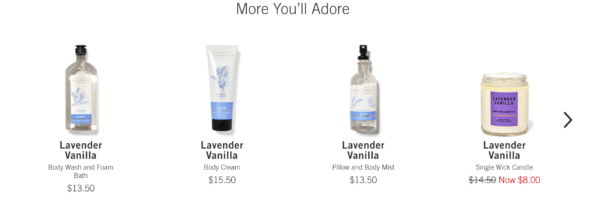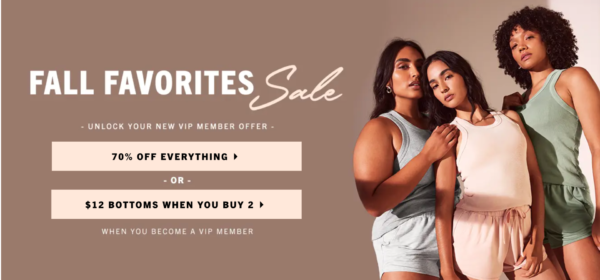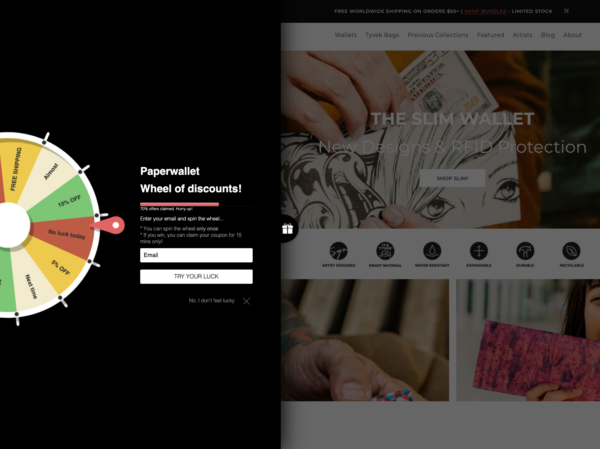
When your online store makes sales daily, it can feel like the most significant accomplishment for your small business. To see your idea come to life and watch others pay money for it is enormous. But what should be your next goal?
It’s not just about increasing sales but — more importantly — getting the best out of each one. After all, you’ve convinced someone to buy your product or service. Now, can you upsell them or turn them into a repeat customer? The answer is usually yes.
To accomplish this, you’ll want to understand your current average order value (AOV) and implement strategies that big brands already use.
Keep reading as we go through how to increase average order value and use this metric as your North Star to increase revenue without spending all your marketing dollars.
Get all the tools you need to quickly find new customers and grow your retail store’s sales.
What is average order value?
The average order value (AOV) is a metric that tells you how much you’re getting per customer. In theory, the more that number goes up, the more efficient your marketing and sales strategy is. One of the first numbers to optimize in a business is the AOV, but how do you calculate it?
To find your AOV business metric, divide your total sales revenue by the number of orders during that time. You can get an AOV per month.
However, considering high and low sales seasons, you may want to calculate AOV for more extended periods like per quarter or year. Normally, your ecommerce platform will run those numbers so that you don’t have to.
Reasons to increase average order value
What makes the average order value so important? Understanding and optimizing your AOV can make the difference when reaching annual sales goals, recovering your costs per acquisition, and creating more lifetime value for each customer. By using specific strategies for how to increase the average order value, you can turn first-time buyers into repeat clients.
Big brands’ strategies for how to increase average order value
Whether you notice it or not, big brands and retailers are often using strategies to get you to buy more. Sometimes it’s subtle — other times, it’s evident and deliberate. Regardless, it’s often effective.
Sometimes, sales strategies for how to increase average order value will appeal to your prevention-focused brain. You want to avoid missing out on a sale or prevent yourself from having to pay full price. Other times, the seller is piquing your interest for a possible gain. You could save money on an item or gain popularity, beauty, or success if only you buy now.
Let’s go through some of these popular strategies below:
1. Bundle products or create packages
Understanding how your products sell will be critical for implementing the bundle strategy. It entails taking products people usually buy together and offering them to the customer as a package with a discount. This strategy’s message is: “We know you need toothpaste and floss with that toothbrush. Why not buy them all together now and save on the bundle?”
This tactic works well because the customer feels like their needs are being met. Does this sound like something you’ve seen online? You can implement it on your own site. Gather some data on products often bought together and start offering a bundle. You might see an increase in your AOV sooner than you expect.
2. Upsell
Upselling is one of the easiest strategies to spot as a customer. Once you see it, there’s no going back — you’ll always know the seller is testing how to increase average order value. Let’s use car shopping as an example.
When you walk onto the lot, you’re expecting to get something practical and of good quality, but affordable. You see that the salesperson wants you to get that pricier car because it’ll be good for them, and you think to yourself, “They won’t convince me.”
An hour later, you’re driving away with a car several thousand dollars more expensive than you thought you’d buy. What happened?
Your salesman upsold you. They did it so perfectly that they used your own needs and motivations to convince you that safe, affordable, and practical simply wouldn’t do it.
That’s what you want to do on your site.
Learn what your users’ needs and motivations are when buying a lower-priced product. Then, subtly add copy — a sidebar or a pop-up — that reminds them how those needs could be met with a slightly more expensive product. After some time, evaluate your efforts and see how effective your strategy is.
3. Cross-sell complementary products
Like the bundle strategy, cross-selling is all about putting products in front of the customer at the right time. However, instead of giving them all the products for a discount, you place additional ones conveniently in view, making it easy to add to their cart.

You might recognize this from websites like Amazon. At the bottom of a listing, you’ll often find a “People who bought this also bought” section. This section is strictly cross-selling, making your order value go up.
4. Set up a customer loyalty program
For most sellers looking for how to increase average order value, customer loyalty programs are the top choice. Loyalty programs are everywhere. From loyalty cards at coffee shops to paid memberships in exchange for discounts, big brands use just about any offer to get you to come back and spend more money.
For every time you return without clicking through an ad, your value as a customer goes up, and the cost to acquire you goes down. So what are some standard loyalty programs?

Think of Kate Hudson’s fitness brand Fabletics. When you arrive, the business immediately offers you a chance to get $12 leggings when you buy two. That’s already a strategy to get you to buy more.
To get that deal, you also have to become a VIP member and answer a full survey including your date of birth, zip code, and email address. By the end, you think you’re getting a membership and $12 leggings when in reality, the company got everything it needs from you to entice you to come back next month.
5. Gamify discounts
A Psychology Today study found that promotional messaging can increase sales on all products, not just those on sale. By gamifying discounts, you not only keep visitors engaged enough to provide you with an email address, but you also increase the likelihood of them using the discount on more products than they originally planned.
It’s a win-win. A great example of this is the discount wheel often implemented on websites as a pop-up. You enter your email to spin the wheel for a discount.

Start with one
Although all of these strategies can be easily implemented with some data and a proper plan, starting with one is easier. Choose a tactic that’s approachable for you and your team and tackle it strategically.
First, imagine and determine the results you want to have in the next few months and set parameters for measuring those results. Next, put the plan into effect, and once the test period is over, come back and assess the results.
Finally, optimize your strategy or try out a different one, but always keep your eye on how to increase your shop’s average order value in the long run.




